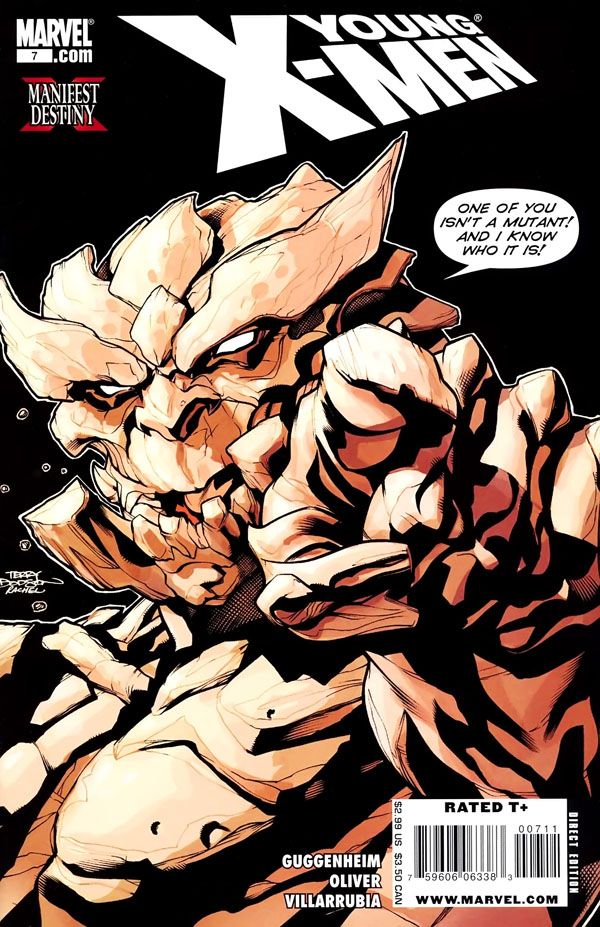I'll be honest: I'm still not entirely sure what to make of "Young X-Men." We're seven issues into the title, and not only is it still setting up its new status quo, but it seems to have found its pacing. The problem is, that pace seems determined to frustrate its readers. Marc Guggenheim's routine now appears to be pretty well set up: drop hints about three or four characters, stretch out throughout the issue small teases that we'll learn the answers to these new questions, then if you're really lucky he'll finally answer one of them. And in a word? It's tiring.
With seven issues down, "Young X-Men" should have some well-established character relationships among its team, some sort of general hook that readers can look forward to seeing more of each month. Instead, half of the original cast is already gone, and the replacements (Sunspot, Mirage, Anole, Graymalkin) are such non-entities when it comes to interacting with anyone at all it makes me wonder why any readers should care about what happens to them.
This may sound a bit harsh, but in a market where single-issue sales are becoming less and less of a sales force, it seems a little mind-boggling that there are so few genuine hooks to make someone want to read another issue. Characters are shuffled in and out almost randomly, and most of them seem to be operating in their own little sub-book. This isn't a team at all, it's seven random characters who fight to get as many pages in an issue as they can.
The sad thing is, there are some smart little flashes of ideas that keep showing up, but it's never enough to justify the book. Guggenheim's revelation of which member of the team isn't a mutant is actually pretty clever, but on its own it doesn't feel like enough to drag you back for more. And while Guggenheim clearly has all sorts of ideas in the back of his head for his new creations like Ink and Graymalkin, if they're dragged out much longer he's going to risk losing an audience that wants to find out the answers.
Even the art is getting lackluster in "Young X-Men." Ben Oliver finishes up a guest-stint here with shapeless, puffy looking characters that perhaps should lay off of the high-sodium diet. It's not a terribly attractive look, saved primarily through Jose Villarrubia's color washes on top of Oliver's art. There's no real oomph, no spark to the art in "Young X-Men," and it ends up dragging the book down even more.
If there was ever a moment of, "Why am I still reading this book?" I'm afraid that this was probably it for me. After a lackluster five-part opening story, this two-part follow-up promised to set the book on track and show its new direction and line-up. Unfortunately, I think all that readers ended up with was another slow, dragged-out story. I want this book to succeed, but sometimes what you want and what you get are two different things entirely.

